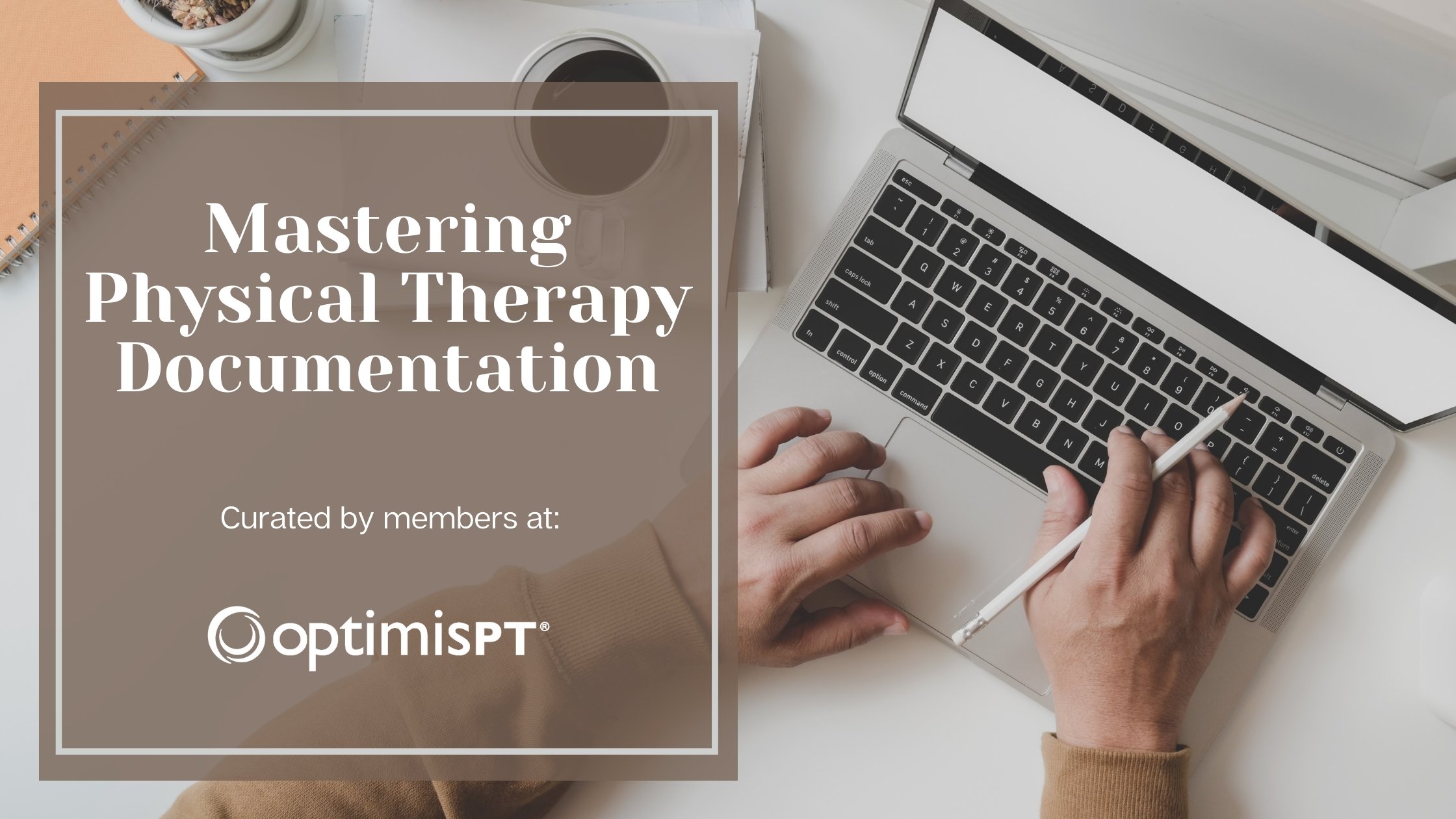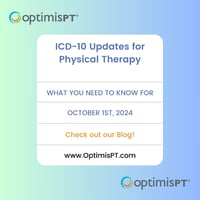Implementing an Electronic Medical Record (EMR) system can transform a physical therapy practice,...
Mastering Clinical Documentation Accuracy in Therapy

Discover the crucial role of accuracy in clinical documentation for therapy practices and how mastering it can lead to better patient care and outcomes.
Understanding the Impact of Documentation Accuracy on Patient Care
Accurate clinical documentation plays a vital role in ensuring optimal patient care and outcomes in physical therapy practices. When documentation is accurate, healthcare providers can effectively communicate important information about a patient's condition, treatment plan, and progress. This allows for seamless coordination of care among different healthcare professionals involved in the patient's therapy journey.
Inaccurate documentation can have serious consequences for patient care. It can lead to miscommunication, errors in treatment, and delays in providing appropriate interventions. For example, if a physical therapist fails to accurately document a patient's progress, another therapist may not have access to crucial information and may inadvertently provide incorrect or ineffective treatments. This can hinder the patient's recovery and potentially worsen their condition.
Furthermore, accurate documentation is essential for billing and reimbursement purposes. Insurance companies and other payers require detailed and accurate documentation to justify the medical necessity of therapy services and ensure appropriate reimbursement. Inaccurate or incomplete documentation can result in denied claims, delays in payment, and financial losses for therapy practices.
In summary, documentation accuracy is crucial for ensuring seamless coordination of care, preventing errors in treatment, and facilitating proper reimbursement for therapy services. By understanding the impact of documentation accuracy on patient care, therapy practitioners can prioritize and master this essential skill.
Best Practices for Ensuring Accuracy in Clinical Documentation
Ensuring accuracy in clinical documentation requires adherence to best practices and attention to detail. Here are some key strategies to enhance documentation accuracy:
- Use standardized templates and forms: Standardized templates can help guide therapy practitioners in documenting essential information consistently. These templates should include sections for relevant patient information, treatment plans, progress notes, and outcomes.
- Document in real-time: It is important to document patient encounters and interventions in real-time to minimize the risk of errors or omissions. Waiting until later to document can lead to forgetfulness or inaccuracies.
- Be specific and objective: Documentation should be clear, specific, and objective. Avoid using ambiguous terms or subjective language that can be open to interpretation. Instead, use measurable and evidence-based information to describe the patient's condition, progress, and response to treatment.
- Review and verify documentation: All documentation should be thoroughly reviewed and verified for accuracy and completeness. This includes checking for spelling and grammatical errors, verifying the correctness of information, and ensuring that all required elements are included.
- Seek clarification when needed: If there is any uncertainty or ambiguity in the patient's information or treatment plan, therapy practitioners should seek clarification from the patient, other healthcare professionals, or relevant sources. It is important to document any clarifications or changes made based on the obtained information.
By following these best practices, therapy practitioners can improve documentation accuracy and promote better patient care and outcomes.
Utilizing Technology to Improve Documentation Accuracy
In the digital age, technology can play a significant role in improving documentation accuracy in therapy practices. Here are some ways technology can be utilized:
- Electronic Medical Records (EMR): Implementing an EMR system allows therapy practitioners to document patient information, treatment plans, progress notes, and outcomes electronically. EMR systems can help reduce errors, streamline documentation processes, and facilitate easy access to patient information across different healthcare settings.
- Speech recognition software: Speech recognition software can be used to transcribe spoken words into text, making documentation faster and more efficient. This technology can help therapy practitioners document patient encounters in real-time without the need for manual typing.
- Decision support tools: Technology can provide therapy practitioners with decision support tools that offer evidence-based guidelines and recommendations for documentation. These tools can help ensure that documentation follows best practices and includes all necessary elements.
- Integration with other systems: Integrating the EHR system with other systems, such as billing and scheduling software, can further enhance documentation accuracy. This integration allows for seamless transfer of information, reduces duplicate data entry, and minimizes the risk of errors.
By leveraging technology, therapy practices can improve documentation accuracy, save time, and enhance overall efficiency in patient care.
Training and Education for Therapy Practitioners on Documentation Accuracy
Training and education are essential for therapy practitioners to develop the necessary skills and knowledge in documentation accuracy. Here are some key aspects to consider:
- Continuing education programs: Therapy practitioners should participate in continuing education programs that focus on documentation accuracy. These programs can provide updates on industry standards, regulations, and best practices.
- Documentation workshops and training sessions: Workshops and training sessions specifically dedicated to documentation accuracy can be organized within therapy practices. These sessions can cover topics such as proper documentation techniques, common pitfalls to avoid, and the importance of accuracy in patient care. Most physical therapy EMR software companies provide some level of training but it may come at a cost.
- Peer learning and mentorship: Encouraging peer learning and mentorship within therapy practices can also contribute to improving documentation accuracy. Experienced therapists can share their knowledge and expertise with newer practitioners, guiding them in developing effective documentation skills.
- Regular performance feedback: Regular performance feedback and evaluations can help therapy practitioners identify areas for improvement in documentation accuracy. Feedback should be constructive and focused on specific areas where improvement is needed.
By investing in training and education, therapy practices can ensure that their practitioners are equipped with the necessary skills and knowledge to maintain documentation accuracy.
Measuring and Monitoring Documentation Accuracy for Continuous Improvement
Measuring and monitoring documentation accuracy is crucial for continuous improvement in therapy practices. Here are some strategies to consider:
- Establish documentation accuracy metrics: Therapy practices should define specific metrics to measure documentation accuracy. These metrics can include the percentage of accurate and complete documentation, the frequency of documentation errors, and the timeliness of documentation.
- Regular audits: Conducting regular audits of documentation can help identify areas of improvement and ensure compliance with documentation standards and regulations. Audits can be performed internally or by engaging external auditors.
- Provide feedback and training based on audit findings: Feedback from audits should be shared with therapy practitioners, highlighting areas of strength and areas that need improvement. Training and targeted education can be provided to address identified deficiencies.
- Implement quality improvement initiatives: Therapy practices can implement quality improvement initiatives focused on enhancing documentation accuracy. This can involve developing standardized processes, providing ongoing education and support, and fostering a culture of continuous learning and improvement.
By measuring and monitoring documentation accuracy, therapy practices can identify opportunities for improvement and implement targeted strategies to enhance accuracy over time.
Achieving documentation consistency across multiple therapists is a natural challenge due to the different styles of learning the rehab disciplines often come with. Conceptualizing a sound plan and implementing said plan is often the most challenging and has proven to require some form of EMR clinical decision support embedded within any given practice.
Achieving documentation standardization is crucial for the future of physical therapy's place in the world of medicine. By achieving this consistency, better outcomes for patients can be realized and further cement the necessity for physical therapy intervention.





"Feedback is feedback. There's no such thing as positive or negative feedback. There's accurate or inaccurate feedback. What you choose to do with it is up to you."